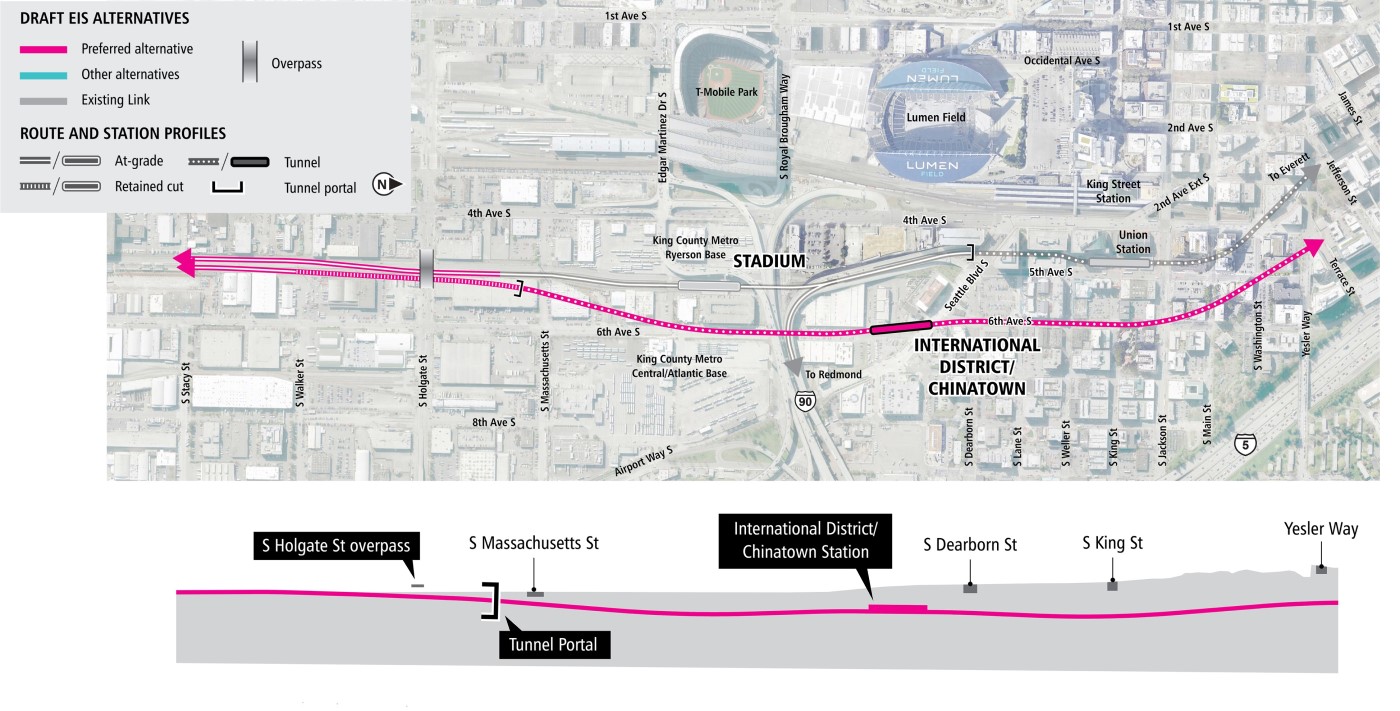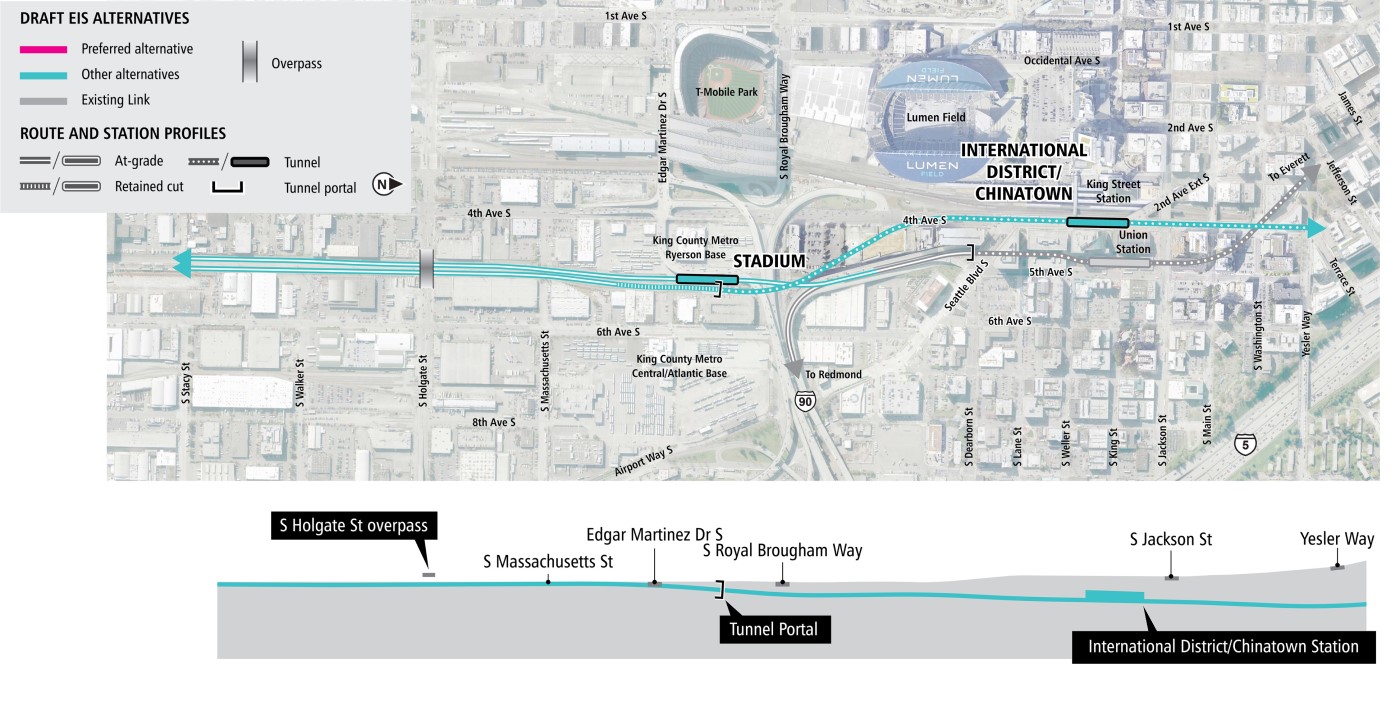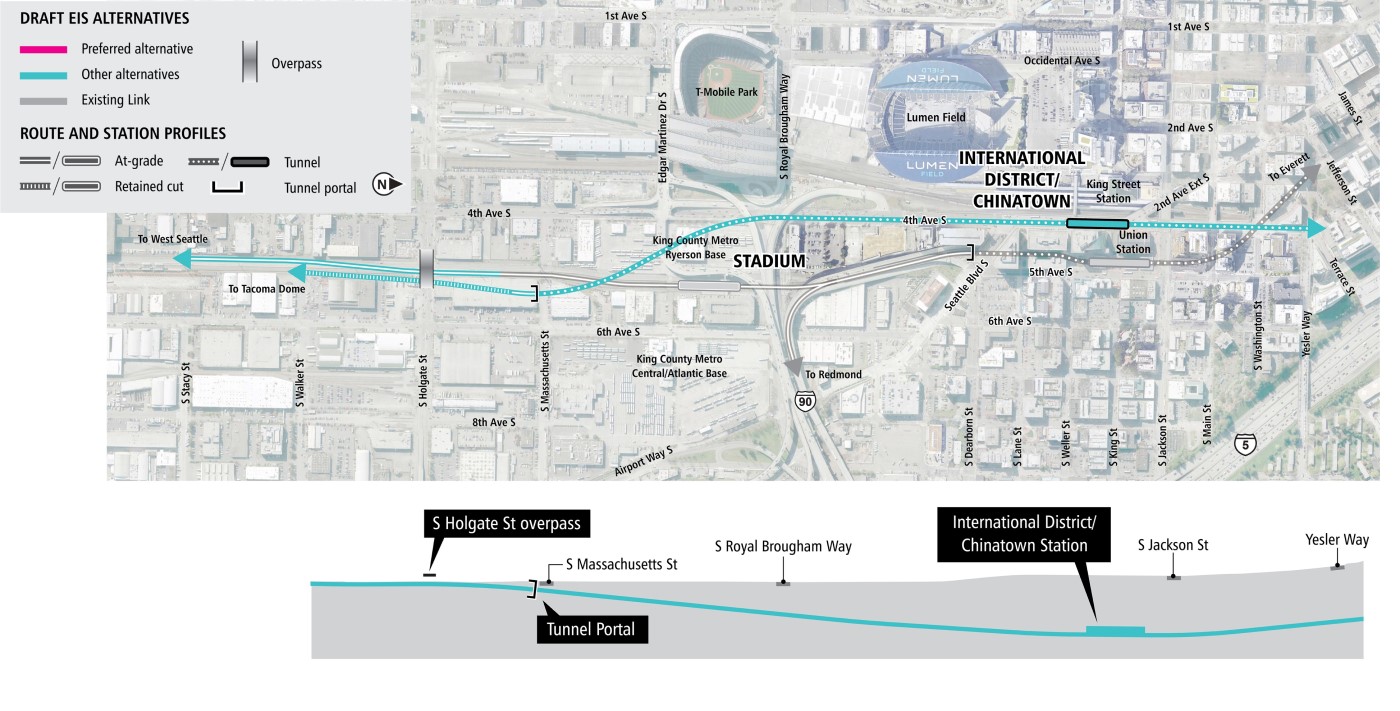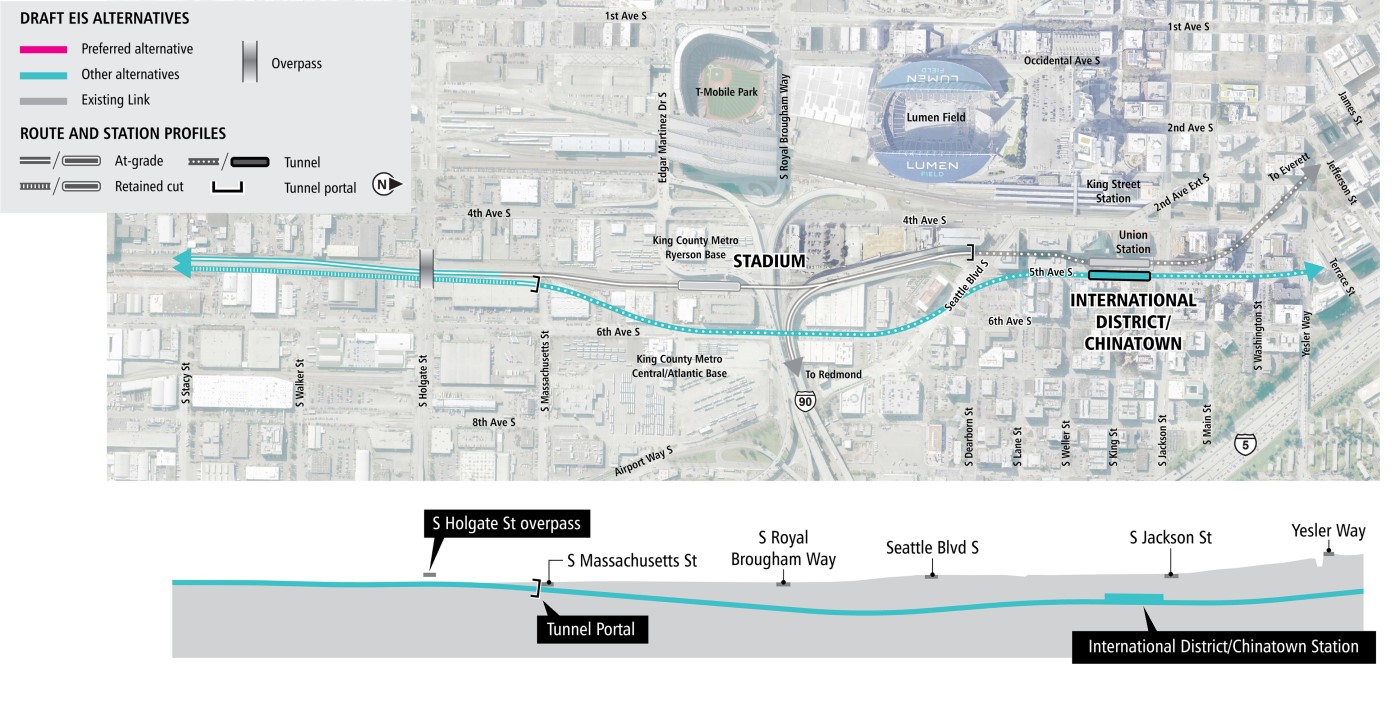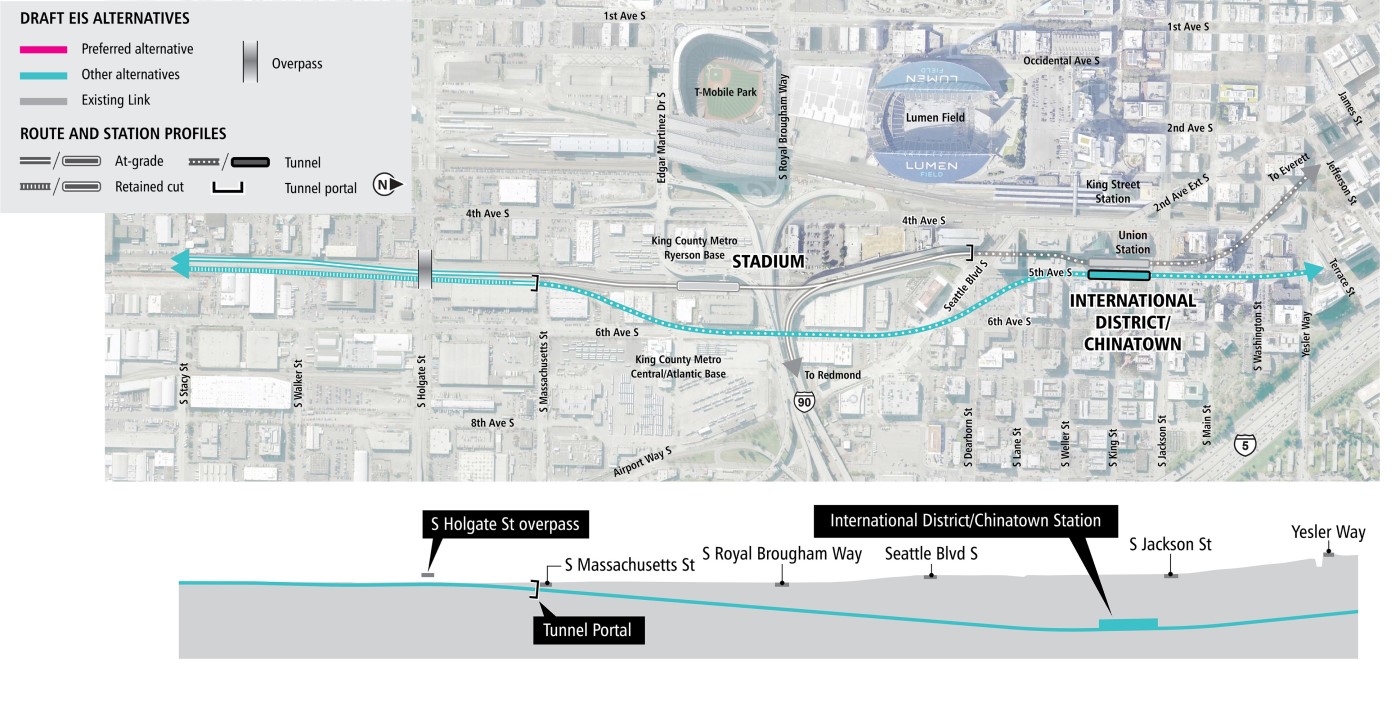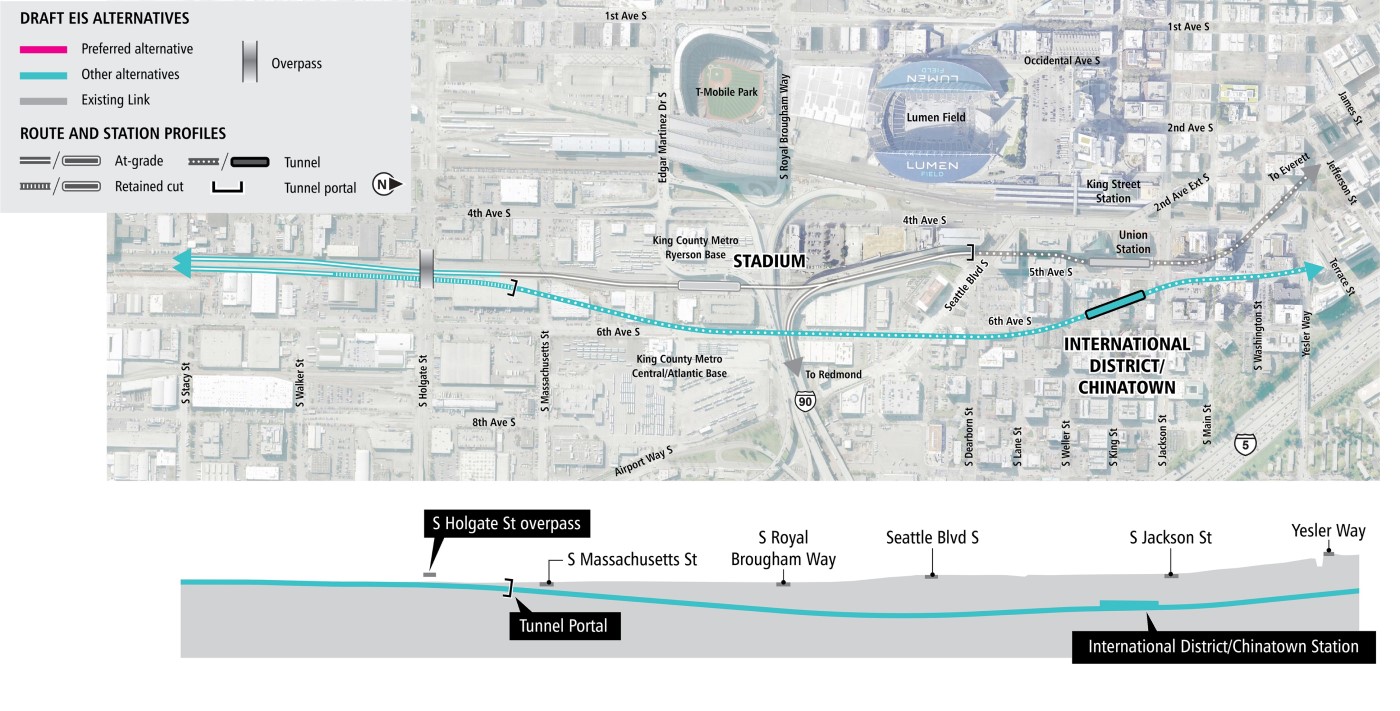The 4th Avenue Shallow Alternative would begin north of the SODO station and continue east of the existing Link light rail line and extend north. The alternative would then enter a tunnel and continue northwest and then north under 4th Avenue. This alternative would necessitate reconstruction of the existing Stadium Station.
Station location: The station would be located beneath 4th Avenue South, west of and with underground pedestrian connection to the existing International District/Chinatown Station.

